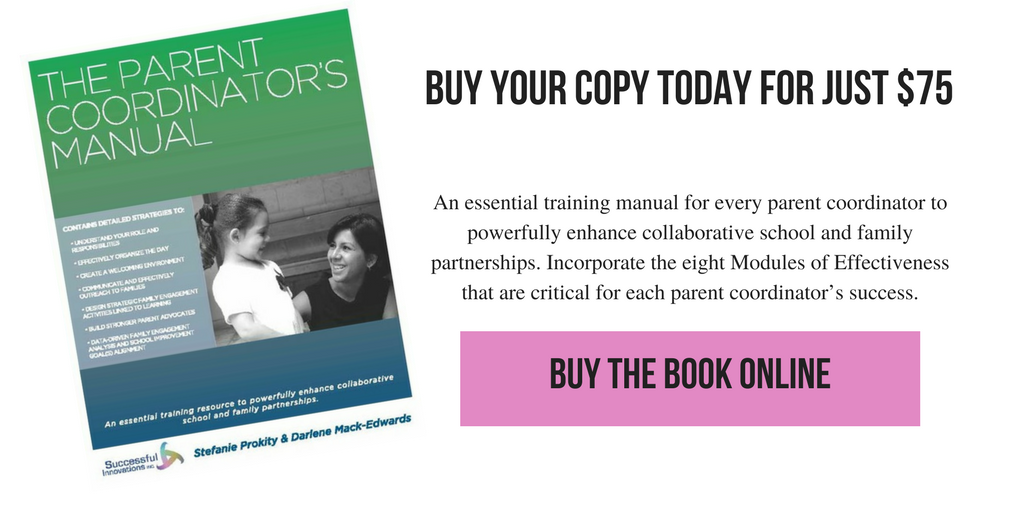Adapted from The Parent Coordinator’s Manual, by Stefanie Prokity & Darla Edwards
As educators, have you had the experience of parents saying to you, “I want to help my child but I just don’t know how”? This can be an overwhelming feeling for parents and families when they have the desire to work with their children but feel ill equipped to manage the educational expectations that come with academic standards and high-stake testing requirements; as well as the educational policies and procedures that are required for schools to comply with. So what role do we as educators have in equipping families to be positive advocates for their children?
First of all: What is Parent Advocacy?
· Advocacy is a process of supporting and empowering parents to express themselves with clarity information concerning school policies, procedures and student expectations at each grade level.
· Another part of advocacy is to equip parents and families to defend and promote their rights and responsibilities in a confident, positive manner.
As educators, we can have an influence of helping equip families to be positives advocates for their child’s education. Below are a few tips to share with families as you provide training on parent advocacy:
1. Inform parents of the policies, procedures and regulations regarding the specific laws in your state and rights as parents in the school system. Provide handbooks and policy manuals for families to view and discuss. Offer “coffee chats” as a time for open dialogue between parents and administrators so parents can voice their concerns and ask questions concerning their child’s education.
2. Help families connect with educators and administrators who make decisions about their child’s education. Provide opportunities for families to meet School Board members, central office administrators and community leaders who effect school policy and school change. These events will encourage families to become engaged partners with their child’s school.
3. Provide parents with the tools to maintain an organized record keeping system of their child’s educational records, assessments, progress reports and communication data. Demonstrate organizational methods to help parents keep data records on their child’s educational progress. Navigation of the school’s procedures will smooth the transition for families as they are equipped to advocate for their child.
4. Assist parents and families in establishing an effective communication format with their child’s teachers and school personnel. Emphasis that two-way communication is vital for creating family and school partnerships that will impact student achievement.
5. Equip parents with strategies that will help their child be more successful at school and home. Provide trainings and resources that will empower parents to feel confident in helping their child with homework and study skills. Many parents will appreciate the opportunity to practice their technique for assisting their child with homework when they have teachers who will model and demonstrate the effective strategies for the reading and math skills they are using in the classroom.
6. Stress the positives and help families identify ways to improve their child’s experiences and success in school; and how to collaborate together to implement solutions to problems and concerns. By building positive relationships with families that show mutual respect and trust, collaborative partnerships will lead to overall student success and school improvement.
If parents are given the tools to help them prepare and plan for their child’s future, they will experience satisfaction and success. Parent advocacy forms a collaborative, proactive, goal oriented strategic roadmap that will ensure student success when families are equipped to be positive advocates for their child’s education.

